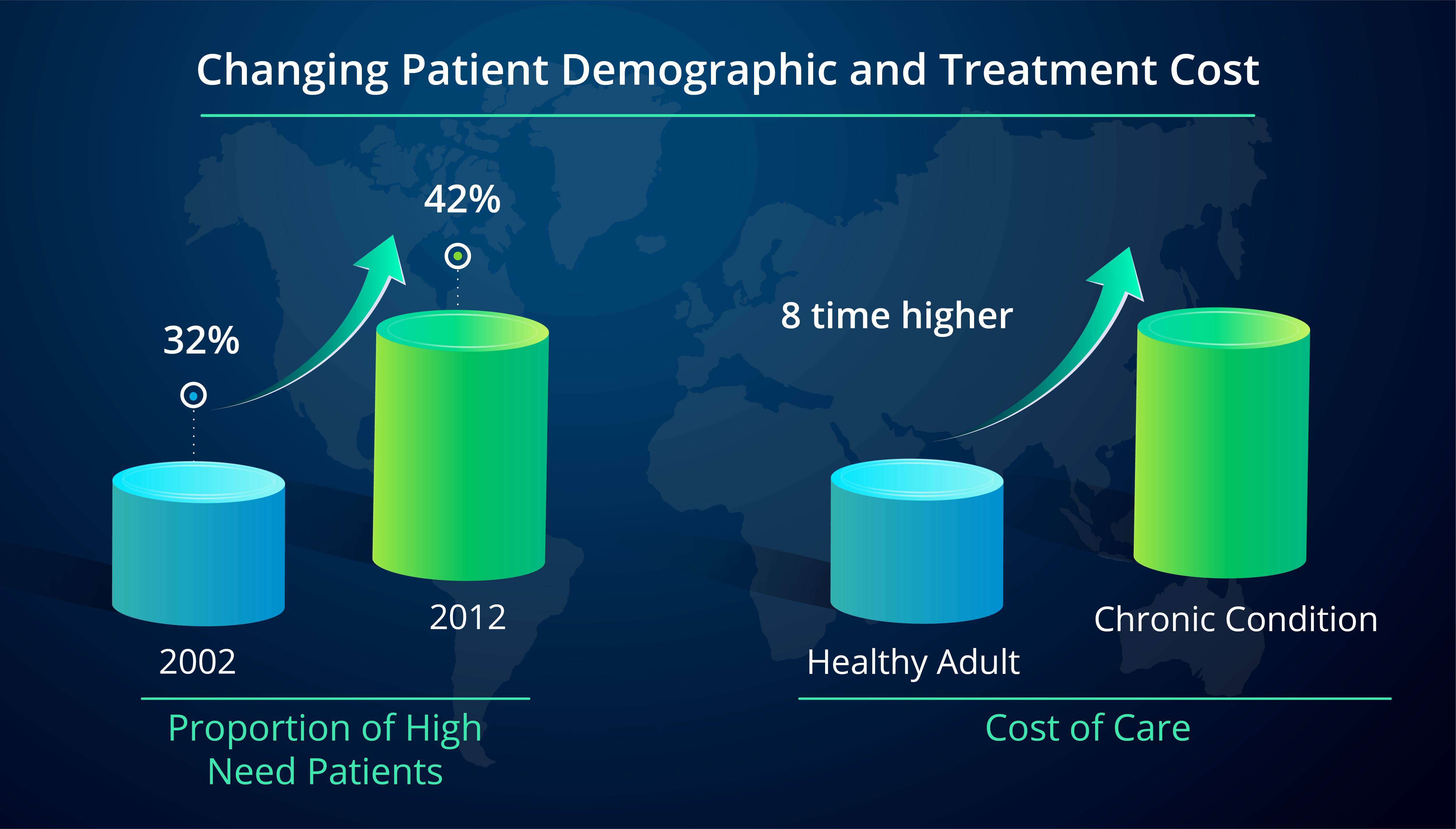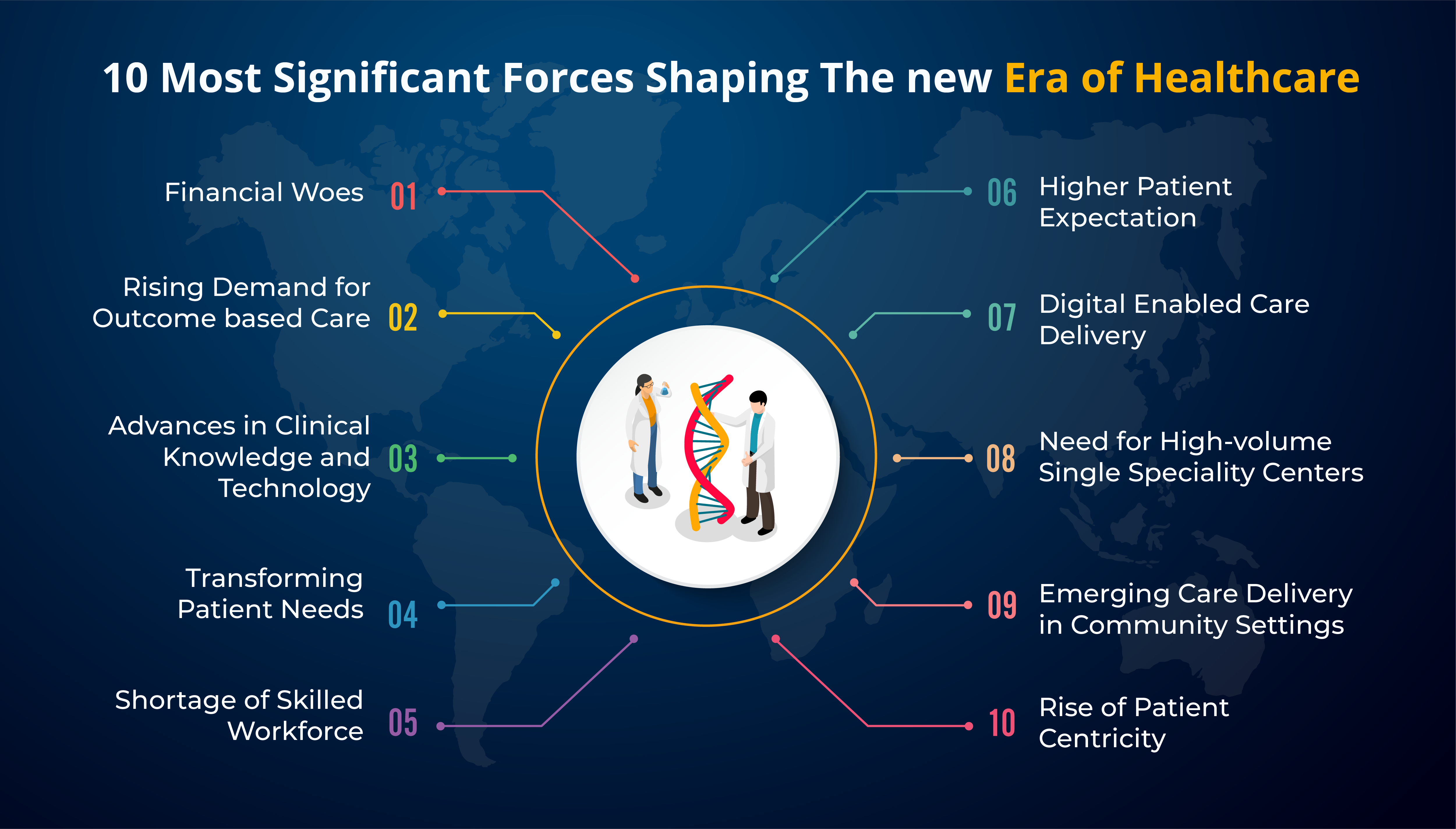Traditional standalone hospitals that once stood as the flagship entity of healthcare are no longer the answer to contemporary urgent needs. Hospital is dead!
Hospitals are under enormous financial pressure. Very recent McKinsey survey opens the pandora’s box of shrinking operating margins for hospitals resulting in financial stress that does not seem to be ending in 2021 or any time soon.
Pandemic has exposed the old fault lines, and has made them untenable. The hospitals are expensive, disregard outcomes, and are not patient centered and can no longer continue. Also, the patient demographic is changing, they are getting older, with more complex needs with various comorbidities; they have new needs that must be met in new ways.
Challenges Hospitals are Facing
Contemporary healthcare providers around the world are facing several urgent imperatives:
- Reinvent care delivery model
- Improving clinical quality
- Better the delivery of personalized, patient-centered care
- Augment the patient experience
- Enhance efficiency and productivity
Pandemic’s Impact:
- Innovation in Healthcare Delivery
- Innovation in the structure of Hospitals

More and more number of patients are surviving heart attacks, strokes and other ailments require significant post-discharge care. The trend is the same across the globe.
The change is an imperative, if present hospitals want to survive and excel in the new era of healthcare.
5 way Impact of Digital on Care Delivery
- Process automation for better efficiency, accuracy and cost-reduction making staff free for patient care
- Closer interaction between patients and caregivers
- Better productivity and management with real-time decision making for assets
- Applications enabling lower variability in type and timeliness of care delivered
- Remote connectivity and care delivery for complete recovery
10 Most Significant Forces Shaping The new Era of Healthcare
- Transforming Patient Needs
- Higher Patient Expectation
- Emerging Care Delivery in Community Settings
- Need for High-volume Single Speciality Centers
- Advances in Clinical Knowledge and Technology
- Digital Enabled Care Delivery
- Shortage of Skilled Workforce
- Financial Woes
- Rising Demand for Outcome based Care
- Rise of Patient Centricity

Irrespective of country, these forces are playing a major role in healthcare transformation.
To sustain, survive and eventually thrive, hospitals of every shape and size must reimagine their function and value they deliver.
Here is How Hospitals can Respond
The best strategy depends upon the healthcare provider, local market conditions such as regulations, cultural benefits, funding, competitive conditions etc.
- Reimagine your business model, and value delivery
- Usher in Strategic and structural changes
- Asses yourself on the iron triangle of Healthcare- Affordability, Access and Effectiveness
- Think of technology to improve Affordability, Access and quality simultaneously
- Reimagine processes with a digital mindset
- Find an ideal long term technology solution provider
- Build a digital roadmap with your tech partner
- Select most apt technologies for your hospital
- Initiate digital Transformation:
- Digitize
- Digitalize; bring in process automation
- Digital Transformation
- Keep evaluating progress and measure outcomes
- Hospitals must focus on change management in equal amounts as change itself.
- Focusing on mind-set and cultural changes of Clinical and non-clinical staff hospitals can increase their agility and ensure sustainability.
- Workforce Reforms are essential for sustainable outcomes
New offerings
- Hospitals must have distinctive offerings for payers and patients to attract and retain their business.
- Lean Processing must be adopted to prevent the variation in quality of care delivery within hospitals, across hospitals and across countries. Standardized processes optimized by AI and digital control centers are being adopted by hospitals to ensure consistent high quality care. Ex. Beth Israel Decaoness Medical center partnered with Amazon to analyse 7 petabyte of data to develop tools for better resource management and delivery.
Patient Expectations – Today, patients want more information, and greater involvement in decision making and expect newest treatment and best amenities.
“Patients are increasingly acting as consumers as a result of easier access to information and technology and rise of new ‘retail’ models of care that prioritize patient experience.
To quote a few examples – dialysis centers offering free wifi and TV during long sessions.
Rise of Care Delivered in Community Setting
Better primary preventive care for patients with chronic conditions reduces complication rates and need for hospital care. Early surgical discharges can be made with better patient satisfaction and with more capabilities in outpatient settings.
Within ten years, in the USA, there is a possibility of 28% of those operations moving to outpatient settings in ten years.
The Future
The future will be divergent from today, with a lot of innovation ushered in by technology. Hospitals in their quest for productivity, efficiency and agility will radically reimagine themselves.
 All Posts
All Posts


